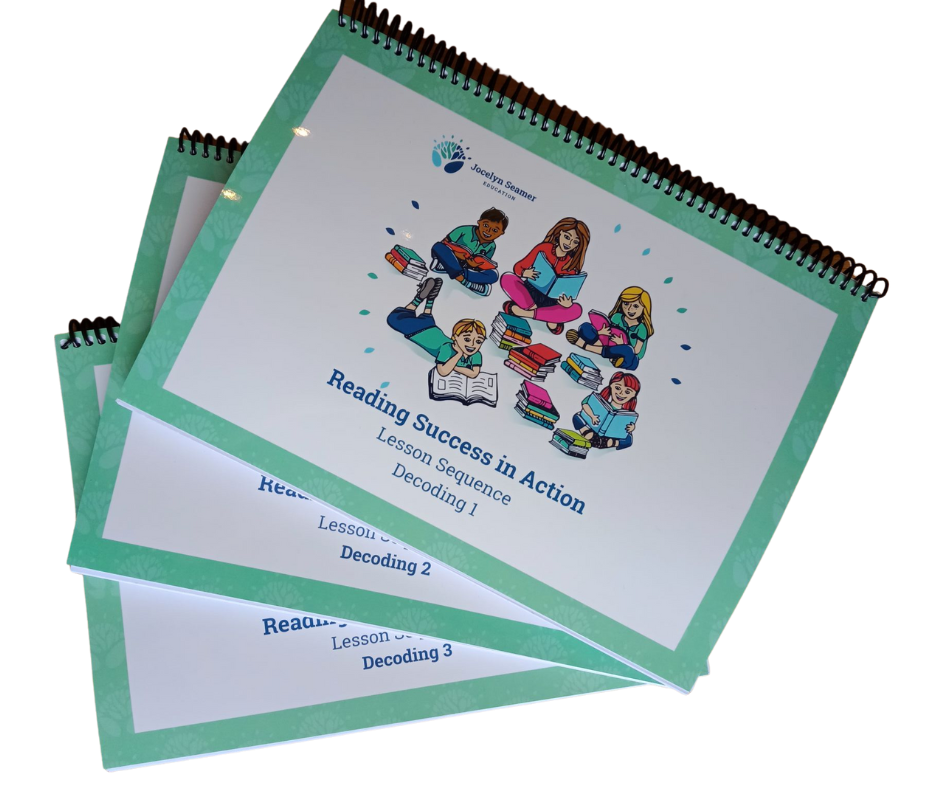Making the Switch from Guided Reading to a Structured Approach

So many teachers have guided reading as the foundation of their reading instruction approach. With a growing understanding of structured literacy, many of us have seen that it’s time for a change. When making the switch from traditional guided reading, there are two components to consider.
The first thing to think about is the ‘what’.
Traditional Guided reading involved:
- Assessing students using benchmark assessment
- Grouping them based on this assessment
- Teaching lessons using levelled texts including teaching students to use three cueing strategies to lift words from the page and use a range of ‘comprehension strategies’

With a structured literacy approach, all of these things have been replaced. Benchmark assessment is replaced with skills-based assessment, and when students are ready, norm-referenced text level assessment. Any grouping that occurs is based on the stage of the alphabetic code that students are currently learning. Lessons focus on teaching phoneme grapheme correspondences and providing the opportunity for students to put these to work in word level reading and spelling lessons, decodable text reading and simple writing that builds on students’ current level of transcription skills. This is a significant shift. Knowledge of the alphabetic principle, the Big 6 ideas of reading instruction and other frameworks that help us understand how we read is needed for teachers to wrap their heads around this change in content.
The second component that needs to be considered is the pedagogical knowledge of structured literacy.
It’s quite a shift from everyone learning in small groups to whole class or larger group teaching. This change requires an adjustment in understanding the role of the teacher. Many teachers have been taught that their role is to organise and curate learning experiences that enable students to construct their own learning. A structured, explicit approach puts the teacher into the role of leader of learning and the director of attention and focus. It can be quite confronting for some teachers to suddenly be in front of the class teaching explicitly. It takes practice to build confidence in explicit teaching if you aren’t used to it, and some may struggle with the philosophical shift needed to embrace it. 
You need an action plan.
If you are currently working your way through the switch from guided reading to explicit teaching, it will be helpful to have a plan of attack. Different people and teams will work through this change in slightly different ways, and if you get to the end point of full structured literacy instruction, you can be confident that all will be well. Here are some potential actions that you might consider planning for:
|
Benchmark assessment |
Use a simple skills-based assessment to discover what phoneme/grapheme correspondences students know and what they still need to learn. Assessment of phonological and phonemic skills is also important. |
|
Levelled texts are read in small groups. |
Replace levelled texts with decodable texts, including for home reading. Introduce partner reading in small groups to start with, and then shift to whole class with students reading the texts most appropriate to them. |
|
Small group work focused on three cueing and levelled text |
Teach phoneme grapheme correspondences in small groups to start with, and then switch to teaching phonics in large groups as your data indicates is needed. |
|
Children are taught to use three cueing strategies to read unknown words |
Teach students to decode unknown words by ‘sounding out’ only. |
|
Reading and spelling are likely treated separately. |
Include both reading and spelling in phonics lessons, focusing on the phoneme/grapheme correspondences you are teaching. |
|
‘Sight words’ are taught using flashcards, and students are encouraged to read words as global shapes. |
A small number of irregular high-frequency words are taught as they are needed to read decodable texts. Students are shown the ‘regular’ and ‘irregular’ parts of words and taught how words are constructed. |

While it is wonderful to make these changes quickly and effectively, it is important to give yourself time to adjust to new ways of teaching. Planning to change everything in a week is unrealistic. Doing so over 6-12 months is achievable. However, it is crucial to implement the shift more quickly for our most vulnerable students. Switch reading material to decodable texts for these students as soon as possible and halt the sight word program for them straight away. In fact, doing this for all of your students is low hanging fruit!

It’s scary to let go of the instructional practices that have been a cornerstone of your teaching, but doing so will be a great gift to your students.
Looking for simple to use lesson sequences to help you teach phonics and decoding without breaking the bank? Learn more about Reading Success in Action here.


 Jocelyn Seamer Education
Jocelyn Seamer Education
2 comments
Thank you, thank you, thank you! I have to do a presentation for the Foundation and Year 1 teachers after the holidays and wasn't sure where to begin. Your action plan has saved me. May change happen!
This is exactly what vulnerable teachers need . Well done!
Leave a comment